Homeowners can straight up agree that hard water is one of the most common residential problems!
In fact, studies show that irrespective of the source, households around the country are equally likely to have hard water. And here’s where water softeners come to the rescue.
The question then becomes; what exactly does this oxymoron mean? Well, in simple terms, water with a high concentration of dissolved minerals is considered “hard” in nature. Likewise, water softeners are appliances which help in softening this type of water. But, there’s more to the story.
In the following sections, we walk you through the major problems of hard water and how a water softener can fix them for good.
So, let’s get down to business, shall we?
Hard Water And Water Softener
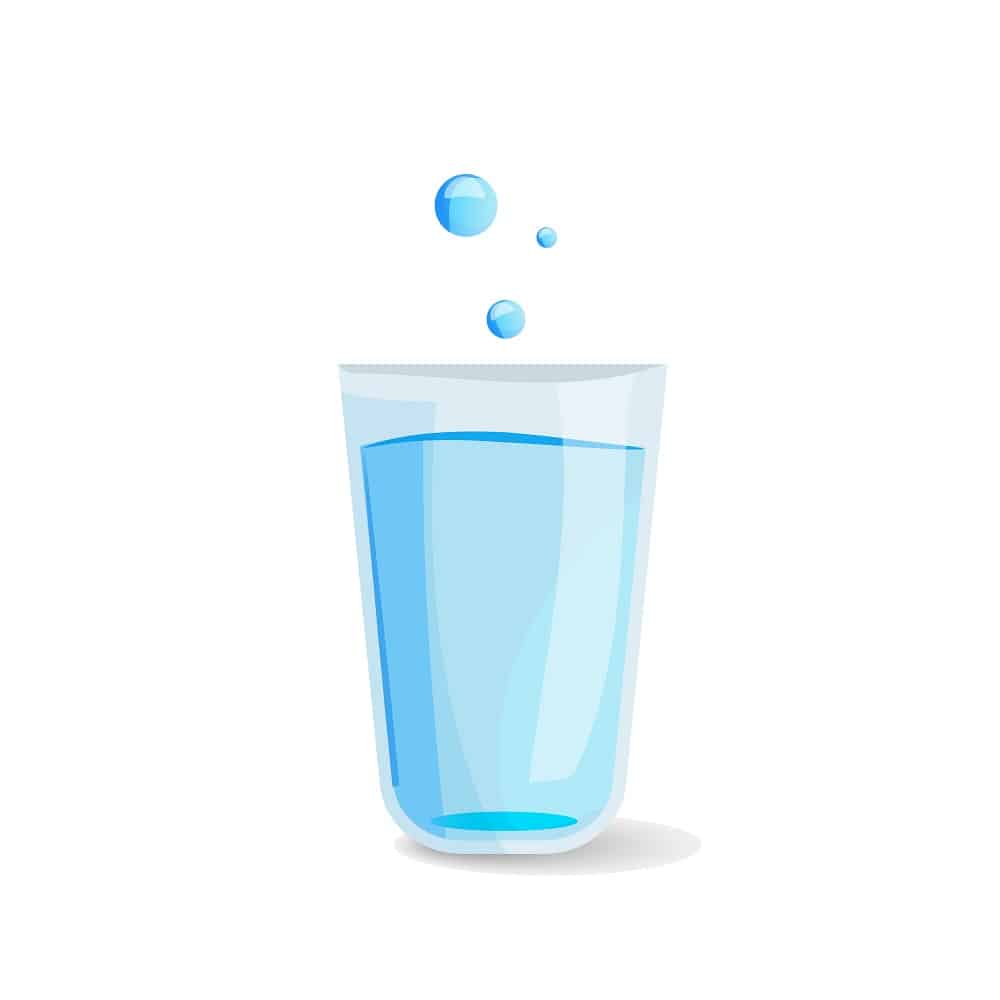
What is Hard Water?
Before we get into the deets of a water softener and its operation, it’s important to understand the effects of having hard water flowing through your taps and showers every day. As we’ve already mentioned, the increased concentration of minerals, magnesium, and calcium, in particular, contribute to make water “hard.” You may then be asking; what are the practical implications?
To start on a positive note, we’d say it isn’t unfit for consumption, but that doesn’t make it any less of a nuisance. The many consequences of hard water range from slightly annoying to totally disastrous. Some of the less troubling effects are:
- Cloudy spots on sinks, dishes, silverware, shower faucets, etc.
- Crusty, white deposits on tea kettles and pots
- Reduced lathering and rinse-ability of shampoo, soaps, and detergents
- Tarnished surfaces due to the formation of soap scum
- Itchy and dry skin upon bathing
While stained utensils and choked faucets require regular cleaning and frequent replacements, reduced lathering of soap-based products is a different kind of hassle altogether. As a result, laundered clothes may appear gray and faded. Not only that, but shampooed hair may also feel dry and sticky due to reduced lathering and rinsing abilities.
What Makes Water Hard?
Sure, the elevated levels of magnesium and calcium. But how do these minerals get dissolved in the first place?
In reality, hard water is a natural outcome of the hydrological cycle. As most of us know, water evaporates from the earth’s surface to form clouds. It then travels back in the form of rain and snow. Because water is a universal solvent, it dissolves numerous minerals on its way to the underground aquifers during percolation.
As this water passes through the layers of limestone and gypsum rocks, it absorbs the high level of calcium and magnesium found in them. Furthermore, groundwater is the predominant source of municipal distribution in cities. In the same way, well water finds extensive use in rural areas. Hence, both cities and rural areas have equal chances of experiencing hard water supply.
The Bigger Picture
The regular flow of hard water has detrimental effects on plumbing systems, appliances, and fixtures. As water runs through supply pipes and comes out of taps and showers, it leaves crusty deposits of minerals throughout the path. With time, the gradual build-up clogs everything; from pipes and seized valves, to washing machines, water heaters, and so on.
After a prolonged period, the water flow gets severely restricted, which, in turn, puts excessive pressure on pipes and outlets. Thus, they may become susceptible to leakage in the long run.
Hard Water And Hot Water Appliances
As far as hot water appliances are concerned, hard water can rack up your electric bills like no other. As the water inside them gets heated up, it increases the solidification of magnesium and calcium, ultimately forming a crusted deposit on the heating element.
This makes the element incapable of dispersing adequate heat even with optimum power supply. Thus, water heaters run longer than average, consuming more electricity in the process.
Upon further heating, this crusted deposit starts cracking and stretching, which emits a rather annoying popcorn popping sound.
How To Detect Hard Water?
Since hard water doesn’t have any peculiar smell or taste, it becomes difficult to assess the quality. But the signs mentioned above should be sufficient to alert you about the presence of hard water.
If you still want to test the level of water hardness in your home, here’s a quick DIY method that you can follow:
- Pour tap water halfway into an empty bottle with a lid
- Add about 10 drops of a non-dyed, non-fragrant dish soap
- Tightly secure the cap and shake vigorously
- If the water becomes milky and cloudy without lathering up, it’s hard
You can continue to add soap until the water begins to lather. The more soap you pour, the more is the hardness of the water.
Water-testing laboratories test samples to determine the amount of minerals in water. So, you can also opt for this method. In addition to determining the exact level of minerals, these tests also provide a detailed report about the quantities of other considerably harmful substances that remain dissolved in water.
Apart from that, you can purchase total hardness test strips to determine the level of hardness. Liquid hardness test kits work in a similar fashion and use a color-changing solution instead.
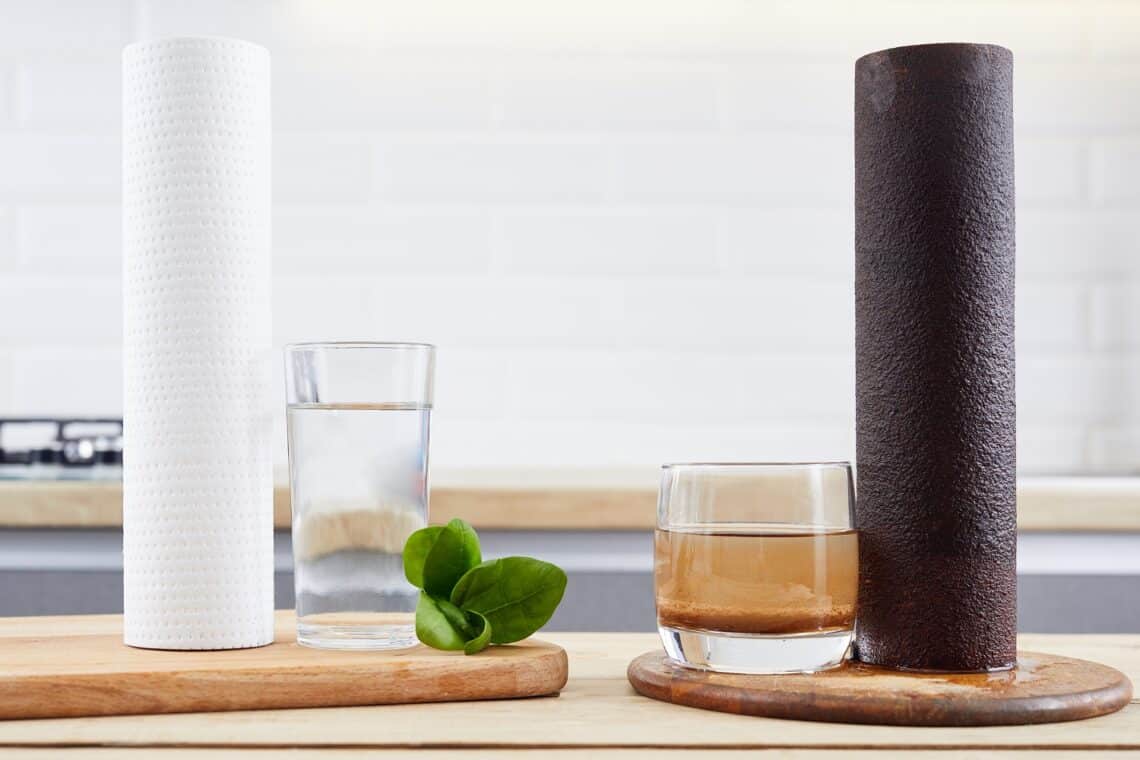
What Is A Water Softener?
To put it simply, water softeners are virtual live saviors! These equipment are whole house filtration systems that eliminate the main hardness causing minerals, namely calcium and magnesium. In the absence of a water softener, hardness causing minerals form thick deposits or scales in pipes, resulting in decreased water pressure. Not only that, scale formation adversely affects several appliances like ice makers, washing machines, coffee makers, etc.
The process by which water softeners work is formally termed as ion exchange. Hard water enters the mineral tank and passes through a layer of spherically shaped raisin beads. These beads, which are generally made of polystyrene, are negatively charged with sodium ions. Hence, they are also referred to as ‘anions’.
On the other hand, the particles of calcium and magnesium have a positive charge, making them ‘cations’.
Since opposite charges attract, the minerals’ positive charge gets attracted to the resin beads. When hard water flows through this layer, it traps the minerals and simultaneously releases sodium ions to maintain the overall balance of electric charge in water. In this way, the resin beads strip the ‘hardness’ from water to make it softer.
The sodium content in soft water doesn’t have any damage-causing ability as such, but maybe a health hazard for people with high blood pressure and kidney problems.
Now that we know the overall process, let’s have a look at the components that actually make it happen.
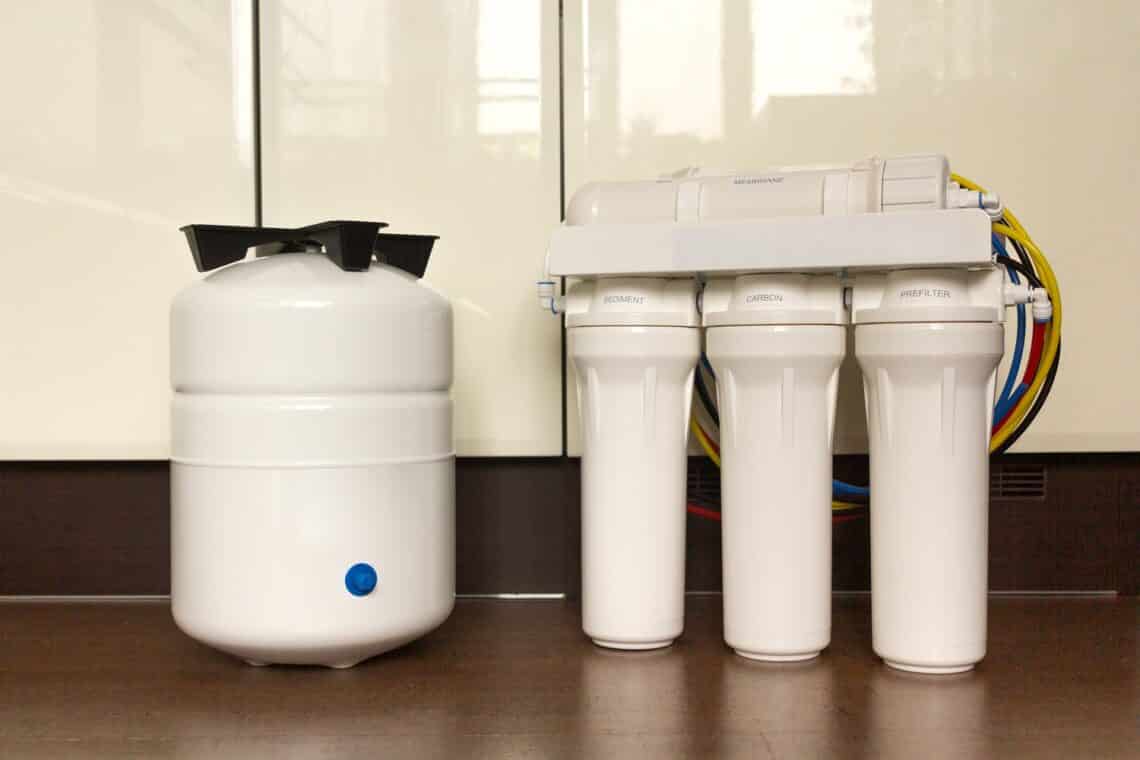
Parts Of A Water Softener
The three main parts, i.e the mineral tank, water control valve and brine tank are responsible for removing minerals, monitoring water flow and cleaning the system, respectively.
- Mineral Tank
As you may have guessed, the mineral tank houses the bed/layer of resin beads that are permanently sealed inside. Hard water enters this chamber through a feed line, and percolates down the bed to deposit calcium and magnesium ions. Once done, soft water flows through the pipes into your home.
- Water Control Valve
If you’re wondering what keeps the resin beads productive, then it’s the control valve. It has an integrated meter that tracks the amount of water flowing into the tank. Since the resin beads continuously filter hard water to remove magnesium and calcium ions, their capacity of releasing sodium ions deplete over time. So, each water softener system can process only a said amount of water before the beds become ineffective.
Upon reaching the upper limit, the control valve automatically induces a regeneration cycle to recharge the bed of resin beads. The maximum capacity of a water softener is pre-programmed into an on-board computer, and depends on several factors like the size of the house, hardness of water, etc. For instance, a three-bedroom house and family of four usually generally require regeneration to occur at every 12,000 gallons.
- The Brine Tank
Right next to the mineral tank is the shorter looking brine tank. It contains a highly concentrated salt solution that is used to recharge the resin beads.
By removing the top lid, the user is required to manually add sodium pellets or blocks, which dissolve with water to sit at the bottom. When the valve registers a decrease in the sodium ions, the solution draws out of the tank and rinses the beads.
This cycle also washes off the deposited minerals, which are then flushed out the discharge hose. Thus, the water softener regains its efficiency to carry on with the job.
Upon being softened, the water contains a significant amount of sodium or salt. This may be a problem for people who want less sodium intake from their diet. So, many users replace the sodium blocks/pellets with that of potassium chloride. However, it’s an expensive alternative.
Another option is to install a reverse-osmosis water filter at the kitchen sink, which effectively removes salt from softened water. Likewise, RO systems can also help in removing sodium from softened water.
How Does Regeneration Happen?
Without sounding too technical, here’s a quick summary of the two methods by which regeneration occurs in water softeners:
Co-Current Regeneration
In this process, the brine solution enters the mineral tank through the feed line, flowing down the depth of the resin beads-bed. As the brine flows over the beads, it forces the release of deposited minerals while simultaneously replacing them with sodium ions. And this process continues as the solution keeps ‘washing’ the beads.
By the time the brine exits the softener, its strength reduces significantly, leaving the topmost beads with maximum sodium beads or charge.
Countercurrent Regeneration
In this alternative method, the brine enters the mineral tank through the exit hose. Hence, it comes in contact with the bottom beads first, where there’s a low depletion of sodium. By the time the solution reaches the top of the resin beads-bed, few sodium ions are lost.
As a result, the lowermost beads retain a maximum charge, enabling them to process the water more effectively right before it exits the softener. Besides, this process allows an equitable distribution of sodium ions throughout the layer.
Water softeners that use countercurrent regeneration are known as high-efficiency softeners, requiring 75% less salt and 65% less water than co-current regeneration.
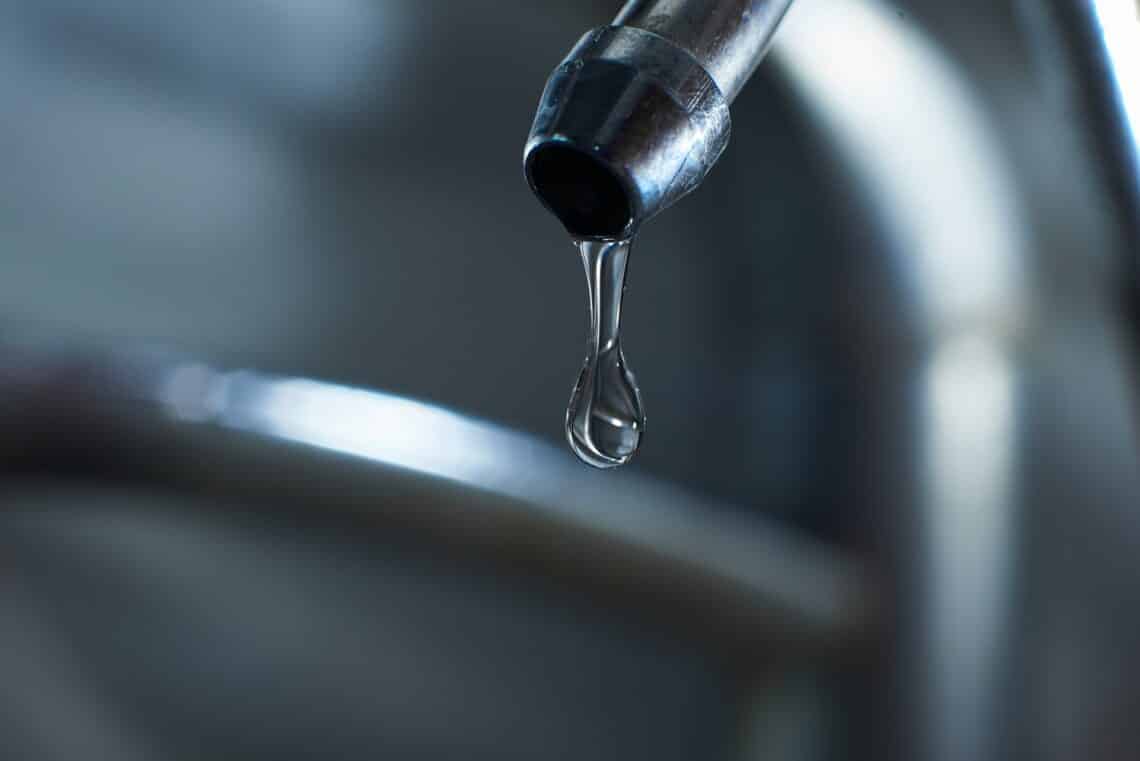
Does Water Softener Remove Iron?
Apart from eliminating calcium and magnesium, water softeners can also remove dissolved (ferrous) iron in small quantities. The presence of iron leads to darkening of water, which may then leave visible stains on bathtubs, floors, sinks and toilets.
In case of insoluble (ferric) iron, water softeners aren’t much of a help. This is because ferric iron clings to the resin beads, resisting even the regeneration cycle. Over time, such an accumulation produces slugs of iron in soft water, in addition to diminishing the lifespan of resin beads.
If your water softener is processing large amounts of iron water, a chemical solution like Rust Ore is ideal for the regeneration process. Not only does it thoroughly cleanse the resin bead, but it also prolongs their service life. In our opinion, iron filters are more suitable for this job.
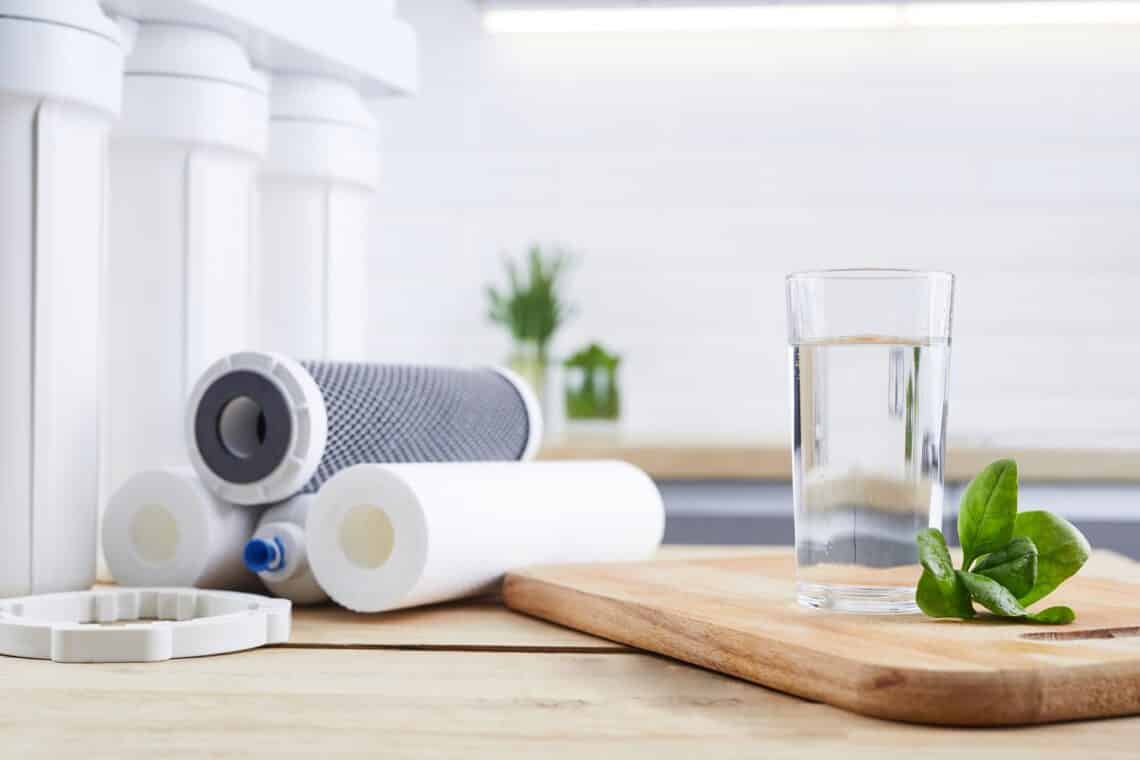
Installing A Water Softener
As the thumb rule, a water softener should be installed very close to the water’s entry point. By doing so, most of the appliances and plumbing systems can benefit from the inflow of softened water.
However, special care should be taken to ensure that it is placed before a water heater, which is more susceptible to hard water-related damages.
Moreover, you’d want to position your water softener in a dry and leveled area, like the basement or garage. In addition to being close to the main water line, it should also have an electric outlet and drainage (for brine) nearby.
Generally, most models have a bypass built into the inlet and outlet. By turning a valve, you can bypass it for installation or maintenance purposes. But if your softener lacks one, we’d advise constructing one out of plumbing for added convenience.
So that things become a bit easier, we’ve listed down the crucial steps for installing a wat
- Positioning The Water Softener
The very first thing is to ensure that the softener’s inlet is connected to the water supply, while the outlet is facing towards the hot water appliances.
- Turning Off The Mains
Turning off the main water supply to your house during installation reduces the chances of leakage. Likewise, it’s always advisable to shut down the electric supply of hot water appliances to prevent a potential accident.
- Draining The Pipes
To eliminate any chances of contamination, drain the pipes by opening the lowest valves to get rid of existing water. This way, only softened water will flow through the pipes once the water softener begins with the process.
- Cutting Into The Mainline
For whole house filtration systems like water softeners, it’s essential to directly connect both the inlet and outlet to the water main. Using a pipe cutter, make sufficient cuts into the mainline. If water spills out, grab hold of a bucket to minimize spillage.
- Connecting The Pipes
Before connecting any pipe to the water softener, it’s essential to make adequate trimming and finishing for proper fitting. In case of copper pipes, it’s a good practice to solder on any nipples before attaching it to the bypass valve. This way, the hot metal won’t melt the plastic valve.
Apart from that, you can also seal all the threads using a plumber’s tape or plastic tubing for greater safety.
If you ask us, we’d highly recommend using flexible tubing. Although you may require more adaptors, these tubes can utilize push-to-connect fittings, thereby doing away with the need for soldering.
- Clamping The Drain Hose
To ensure proper drainage of the depleted brine used during regeneration, securely clamp the hose and feed it into a dedicated sink or drain. However, stopping here won’t suffice, as there’s a risk of back siphoning. The standard procedure here is to leave an air gap of about 2 inches between the hose’s end and drain.
- Connecting The Overflow Tube
Overflow tubes are a means of additional precaution against flooding or overflowing of the brine tank. The exact placement of this hose generally varies from one model to the other, and is specified in the manufacturer’s instructions.
Despite knowing the procedure, installing a water softener can be easier said than done. Thus, we’d suggest getting professional help, especially if you’ve little plumbing experience.
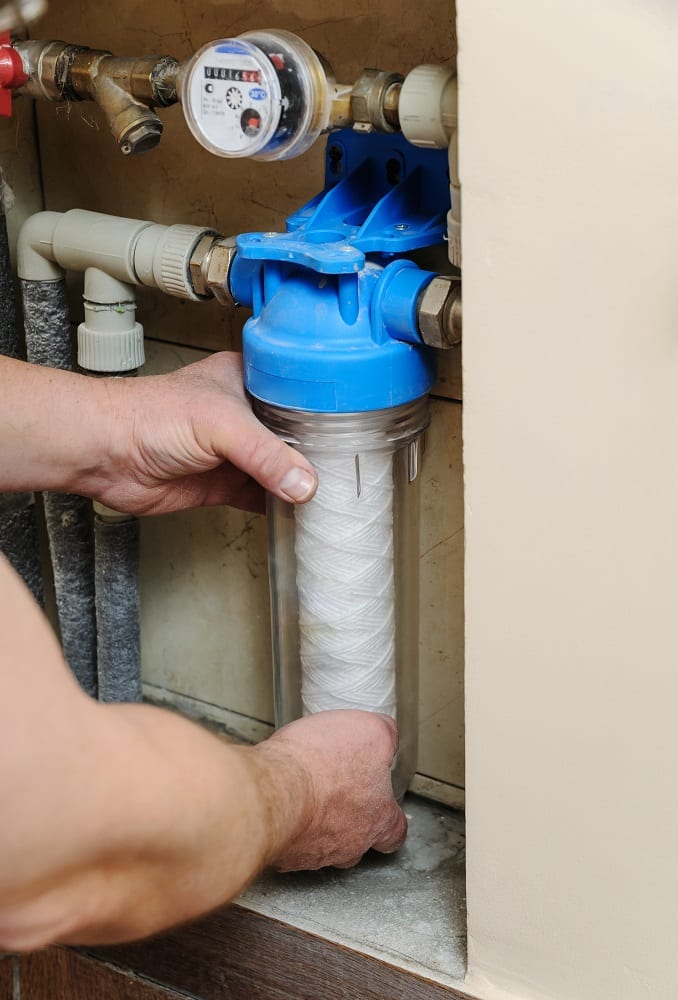
What Are The Benefits Of A Water Softener?
In a nutshell, here are the some of the benefits that make a water softener worth investing in:
- Reduced Costs
Since soft water doesn’t clog the pipes, the resultant water pressure remains normal throughout. This, in turn, minimizes the need for frequent replacement and repair. Also, your appliances perform more efficiently for a longer span. Plus, the electric and water bills are kept at a minimum.
- Non-Itchy Skin And Clean Hair
Soft water that contains lower minerals enhances your skin’s ability to retain moisture. Moreover, they preserve the natural oils of the body, removing which can cause dry and irritated skin.
Unlike hard water, soft water helps maintain the pH balance of your hair and makes them look bouncy and fresh.
- Brighter And Cleaner Clothes
Soft water doesn’t contain any color-fading minerals, nor do they stain whites. Thus, the clothes keep their original color. Plus, the increased lathering ability cleans fabric with minimum soap and effort.
Leakage Issues In A Water Softener
One of the most common reasons behind water softener leaks is faulty installation or maintenance. As such, take your time to ensure that the pipes are threaded well, and any adapter or push-to-connect fitting is seated correctly.
Furthermore, cracked bypass valves can also cause the softener to spring leaks. These valves usually utilize lubricated O-rings for fitting purposes, which may need a touch-up or replacement over time.
In the same way, worn-out rotor valves (which directs the water flow in the system) can also develop cracks after prolonged use. A simple replacement should get things back on track.
On that note, we should also mention that the regular use of a water softener shouldn’t initiate a leak, not if it remains protected from physical damages. For instance, bumping into the softener can cause the fittings to come apart. In that case, leaks will become inevitable. Hence, find a safe and stable location for installation, which isn’t too cramped.
If you live in an earthquake-prone zone, secure it to the extent where moderate jolts won’t make the softener tip over and pull out the plumbing.
Another common phenomenon is when the softener starts leaking during regeneration. In such a case, wait till the process is completed to check for possible cracks in the system. Also, keep an eye on the drain line to keep clogging at bay. A blocked drainage line can cause the depleted brine solution to flood the area.
Never attempt any repair or maintenance job with the power supply on. Always unplug the softener from the electric source and switch off the bypass to isolate it from the rest of the plumbing setup. In the absence of a bypass, disconnect the main water line until the issue is resolved.
At the risk of repeating ourselves, we’d like to remind you about seeking professional help in severe cases.
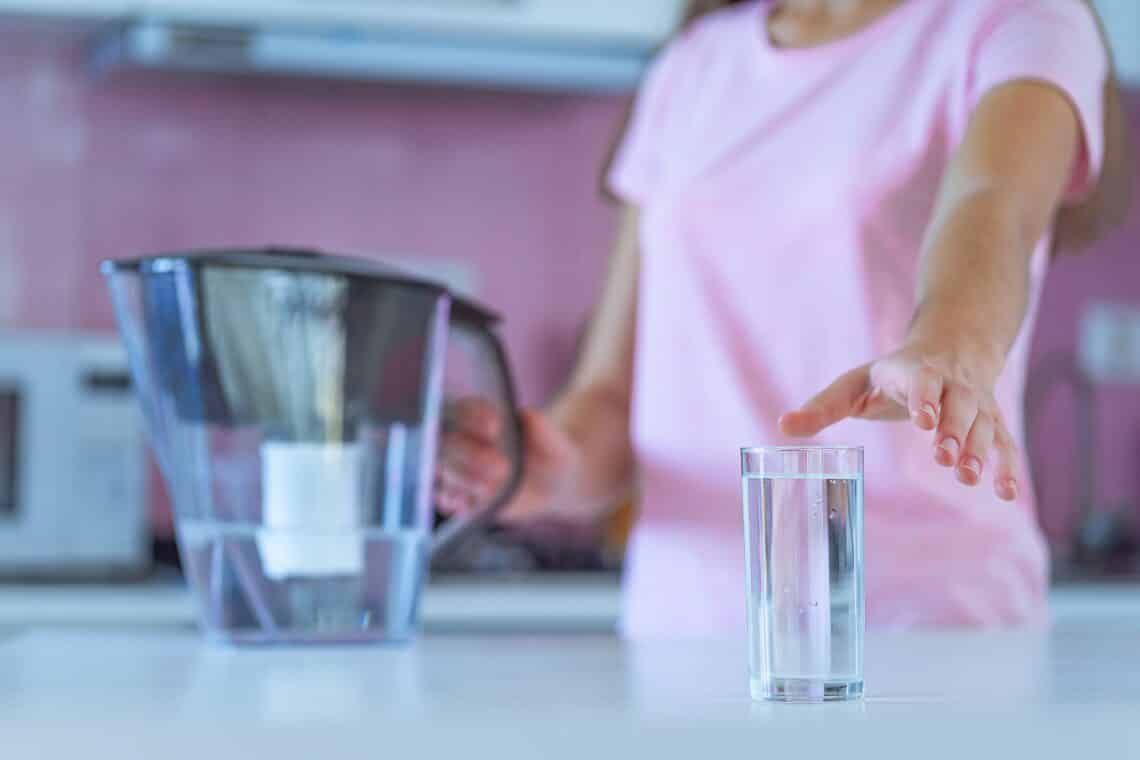
When Should A Water Softener Be Replaced?
With proper and regular maintenance, water softeners should last for at least about 15 years, if not more. One of the most effective ways to prolong the lifespan of a softener is by ensuring that the brine tank is always full. Moreover, protecting the resin beads from high amounts of magnesium and iron can also be fruitful for the cause.
Several resin cleaners on the market work well to remove stubborn deposits of minerals. In an ideal scenario, the beads last for a minimum of two decades. But there are a few exceptions. For example, water with a high level of chlorine can render the beads useless before time. Similarly, regular inflow of sediments can cause irreversible damage to the control valve.
If the water supply in your area contains significant amounts of dirt and debris, installing a sediment filter in front of the softener is advisable. Besides, areas with over 14 gpg (a measure of the ‘hardness’ of water) hard water can prematurely curtail the service life of the system.
Understandably, several different factors make it difficult to predict the exact lifespan of a water softener. But if the unit is more than a decade old, it’s highly likely that you’ll notice a constant decline in the softening capabilities. This may be the time to invest in a new one.
Alternatively, you can also choose to replace one or more parts that have sustained significant damages. In that case, you’d need a thorough professional check-up to gauge the possibility of replacement.
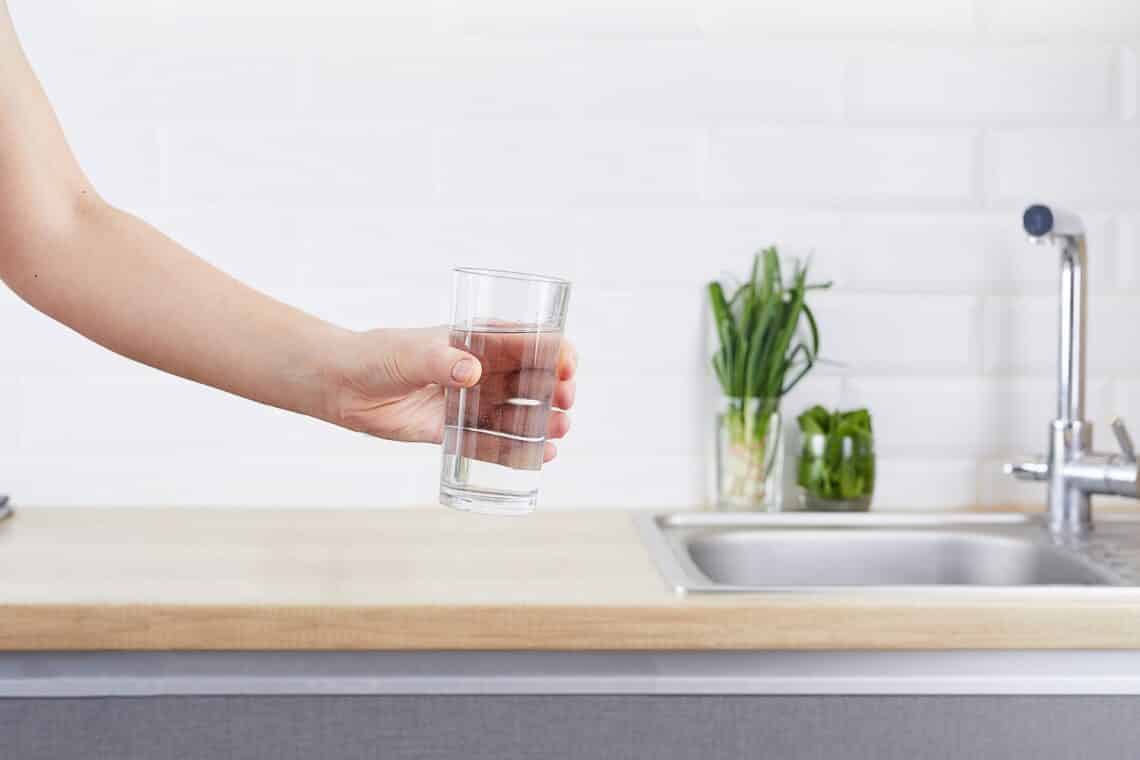
How Much Does A Water Softener Cost?
A full house water-filtration system can cost anywhere between $600 to $1,500. Furthermore, the cost can go considerably high, depending on the size and capabilities of the most suitable model for your home. That being said, the efficiency and lifespan of even the most expensive softeners outweigh the premium price tag.
Not only do they consume minimal electricity, but the subsequent operational costs are also on the lower side.
Perhaps, the only expensive part is replacing the brine tank with salt. According to industry standards, a family of four with a standard efficiency softener go through approximately 40 pounds of salt per month. And one such bag of sodium pellets may cost anywhere between $10-$25. On top of that, areas with a higher concentration of hardness causing minerals will require more regeneration sessions.
In such cases, upgrading to a high-efficiency softener, one that uses countercurrent regeneration, will solve this problem.
Final Words
Now that we’ve reached the end of this guide, we are sure that you’ve made up your mind on buying the ideal water softener.
No matter how insignificant a problem low water pressure and stained surfaces appear to be, it won’t be long before things take a more serious turn. After all, you can’t expect hard water to become soft on its own!
The blocked water lines and overrunning water heaters will inevitably cause your utility bills to skyrocket. And the ideal way to eliminate this possibility is by installing a water softener. However, these systems too need regular maintenance for uninterrupted efficiency.
Although the cost and effort may initially seem to be an added burden, the many benefits will make it worth it. Considering the daily frustrations and expenses of hard water-related problems, we’d take a water softener in a heartbeat!
With that thought, it’s time for us to bring down the curtains. We’d love to hear from you in the comments down below.
See you another day!
Related Articles
15 Best Wireless Water Shut-Off Valves
How to Clean a Brita Pitcher and Prevent Mold and Mildew
13 Best Whole House Water Filters


